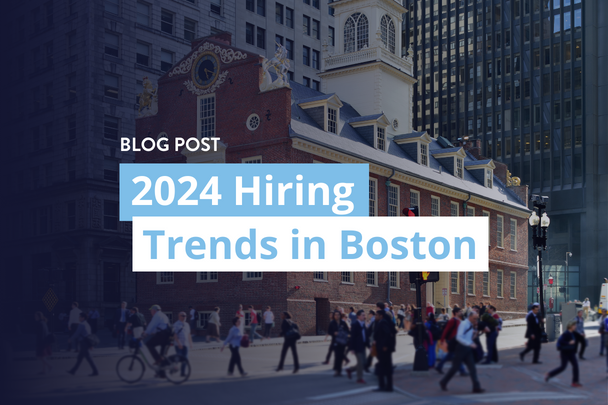2020 has seen massive economic disruption due to the COVID-19. The business world has responded rapidly by adapting to the situation. This led to a major workplace transformation.
For many companies, working from home is ‘the new normal’. The relationship between the employer, the employee, and the customer is becoming digitized. Yet, many businesses are at the crossroads as this situation has brought along some major workplace issues.
In this article we take a look into the 3 biggest issues in the workplace that businesses are facing in the post COVID-19 world.
4 Key statistics about the impact of COVID-19 on the workplace
Recently, Catalyst partnered with Edelman Intelligence to dig into the impacts of COVID-19 in the workplace. Here are some key findings from this study:
- Seven in 10 employees believe that workplaces will accelerate gender equity in the wake of the COVID-19 pandemic.
- 41 percent of employees surveyed are skeptical of their employer and do not feel their company is committed to build a more inclusive working environment.
- Business leaders (65 percent) are more likely than employees (44 percent) to believe that COVID-19 provides companies with an opportunity to create more inclusive workplaces for women.
- More employees than business leaders fear that COVID-19 has negatively impacted their chance to earn a promotion (60 percent vs 28 percent).
3 biggest issues in the workplace due to COVID-19 and how to fix them
1. Ensuring employee safety
Ensuring employee safety is essential for all businesses, regardless of their sector of activity. Yet, as businesses slowly re-open after the lock-down, many find this a challenging step. Employees face various degrees of risks depending on the type of work they are doing, where they are doing it and their own level of precaution. It is critical that organizations support their employees, while ensuring fairness for all of their staff.
Pro tip 1
If you have employees working from home, encourage them to regularly monitor their health status and respect safety guidelines, such as social distancing when they are out of their homes. Be sure to check the Employer’s guide to working from home in response to the outbreak of COVID-19, recently published by the International Labour Organization.
For employees still needed to be physically present at the workplace, providing personal protective equipment is the bare minimum you can do. It is good practice to regularly test for symptoms and enforce social distancing measures. Moreover, ensure that all essential employee information is up to date, such as emergency contact information.
Pro tip 2
One of the most effective ways to mitigate possible spreading of the Coronavirus is by splitting your employees into several smaller teams. In an ideal world, you would split your staff into separate working locations. But since this may be difficult to achieve for many businesses, you can instead turn to different working shifts for different teams. This can potentially save your whole workforce from going into quarantine at the same time if a team member is infected. You can give a scheduling software a go if you intend to implement different shifts as this will definitely save you some time.
2. Maintaining productivity
As lockdowns slowly soften around the globe, many organizations resuming their operations are looking at how they can restructure their business to be more resilient to unforeseen catastrophes. Surprisingly, productivity has increased by 13 percent during the lockdown, according to BBC. Maintaining productivity and motivating employees to perform in the post COVID-19 era is decisive for the ongoing success of any business.
Pro tip 3
With the current situation worldwide, an employee may fall ill or become infected at any time, and hence, they would be unable to carry out their duties. Many organizations may be paralyzed in such a situation, especially if the role of this team member is a crucial one. To avoid this scenario, you should have a contingency plan ready for all key roles. Start by identifying these critical positions and who can replace these pivotal employees. In case none of your staff members are able to take over these responsibilities, identify the skill gaps and provide adequate training. Alternatively, you can look out for suitable external replacements to fill these key positions.
Pro tip 4
It is easier to track down your business productivity if you already have a set of key performance indicators (KPIs) tied to specific objectives. You may need to re-adjust your pre-COVID 19 goals to more realistic forecasts, depending on how your business has performed. Re-adjusting your goals will very likely require priorities to be aligned accordingly. Managers and supervisors should be setting the tone here, as they are directly responsible to set your workforce on track to ensure objectives are met within the given timeframe.
3. Communication gaps
In a time of crisis, communication is wealth. Communication in the workplace highly influences the direction, and ultimately the success of an organization. Business leaders should communicate updates and changes that take place to their workforce regularly. Poor communication often lowers productivity and directly impedes on long term goals.
Pro tip 5
Transparency about decisions taken and expectations on all staff should be clearly communicated. In the current situation, having a team responsible for sharing relevant information across different hierarchical levels can be very useful. Moreover, consider providing updates on measures advised by concerned authorities, such as the World Health Organization. This small step shows that you care for your staff, and indirectly influence your workforce morale.
Pro tip 6
Enure your workforce has access to the right communication tools. While email apps, video conferencing softwares or data sharing platforms are casually used by many, it is very important that your staff knows how to effectively use these in a business environment. Do not hesitate to refer your employees to tutorials and other resources that can make their work easier. Additionally, you should make sure that your staff have the necessary protection in the online world. Go for a trusted name when opting for an antivirus and discourage the use of pirated softwares, as these may expose data being shared across users.
Off you go
The recent pandemic outbreak has sent the world economy in an unforeseen crisis. As the world slowly recovers from the COVID-19 lock-downs, many organizations were pleasantly surprised to see an increase in productivity. Unfortunately not all businesses have made it through, and this situation has clearly outlined that there is an urgent need to improve the world’s economic resilience. It all starts with fixing the workplace issues left behind by the COVID-19.
By Guest Contributor: Chloe Sesta Jacobs
Chloe’s why is people; she gets her kicks from intensifying the purpose and exploring the potential of those around her. She works as Head of People & Culture at Deputy, a robust scheduling software that can be used to manage your workforce in a wide variety of different industries. Chloe sees her work as an extension of her lifestyle and is constantly working on revolutionizing the people and culture space.











